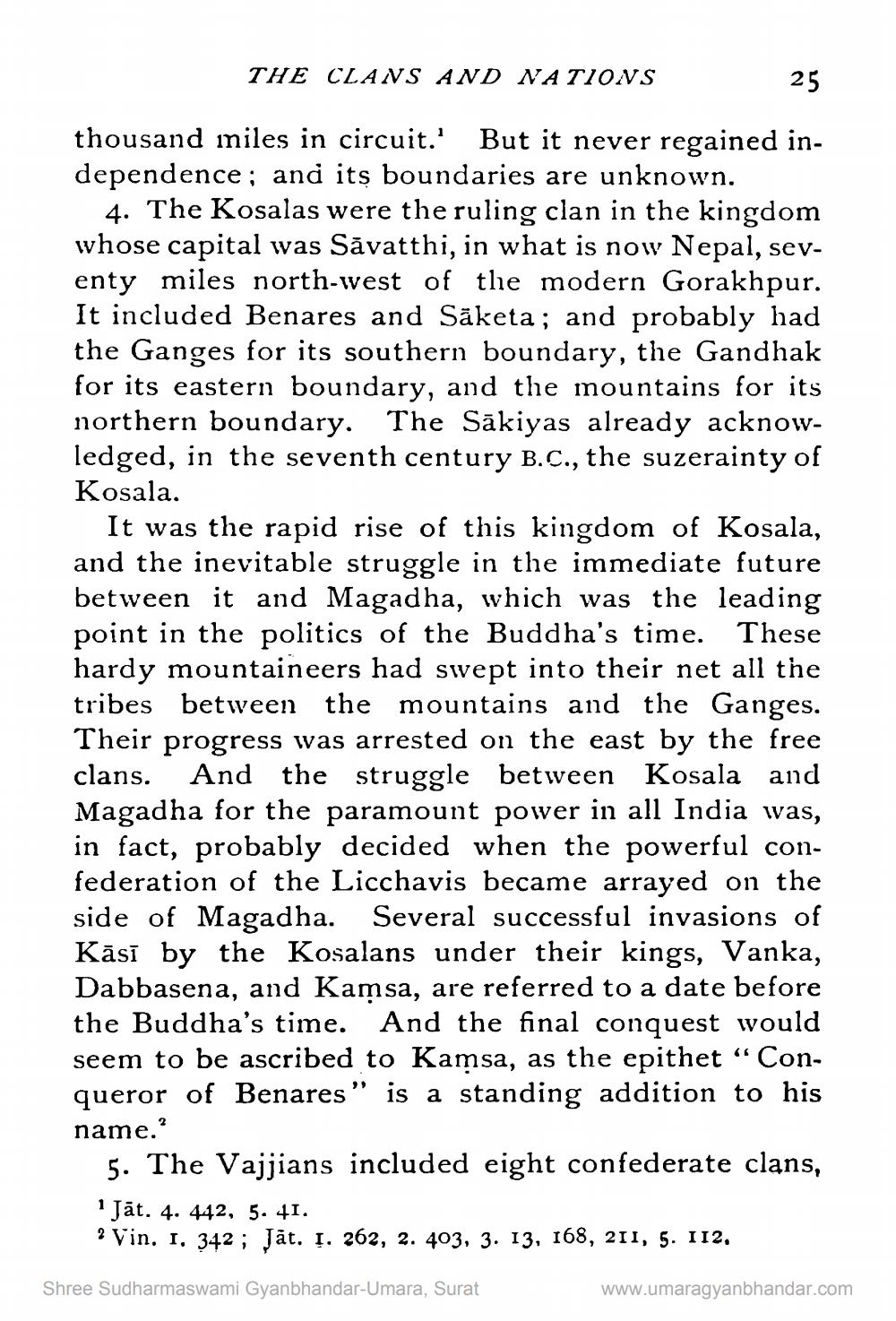________________
THE CLANS AND NATIONS
25
thousand iniles in circuit. But it never regained independence; and its boundaries are unknown.
4. The Kosalas were the ruling clan in the kingdom whose capital was Săvatthi, in what is now Nepal, seventy miles north-west of the modern Gorakhpur. It included Benares and Sāketa; and probably had the Ganges for its southern boundary, the Gandhak for its eastern boundary, and the mountains for its northern boundary. The Sākiyas already acknowledged, in the seventh century B.C., the suzerainty of Kosala.
It was the rapid rise of this kingdom of Kosala, and the inevitable struggle in the immediate future between it and Magadha, which was the leading point in the politics of the Buddha's time. These hardy mountaineers had swept into their net all the tribes between the mountains and the Ganges. Their progress was arrested on the east by the free clans. And the struggle between Kosala and Magadha for the paramount power in all India was, in fact, probably decided when the powerful confederation of the Licchavis became arrayed on the side of Magadha. Several successful invasions of Kāsī by the Kosalans under their kings, Vanka, Dabbasena, and Kamsa, are referred to a date before the Buddha's time. And the final conquest would seem to be ascribed to Kamsa, as the epithet “Conqueror of Benares" is a standing addition to his name.?
5. The Vajjians included eight confederate clans, Jāt. 4. 442, 5. 41. ? Vin. I. 342 ; Jāt. Į. 262, 2. 403, 3. 13, 168, 211, 5. 112,
Shree Sudharmaswami Gyanbhandar-Umara, Surat
www.umaragyanbhandar.com




